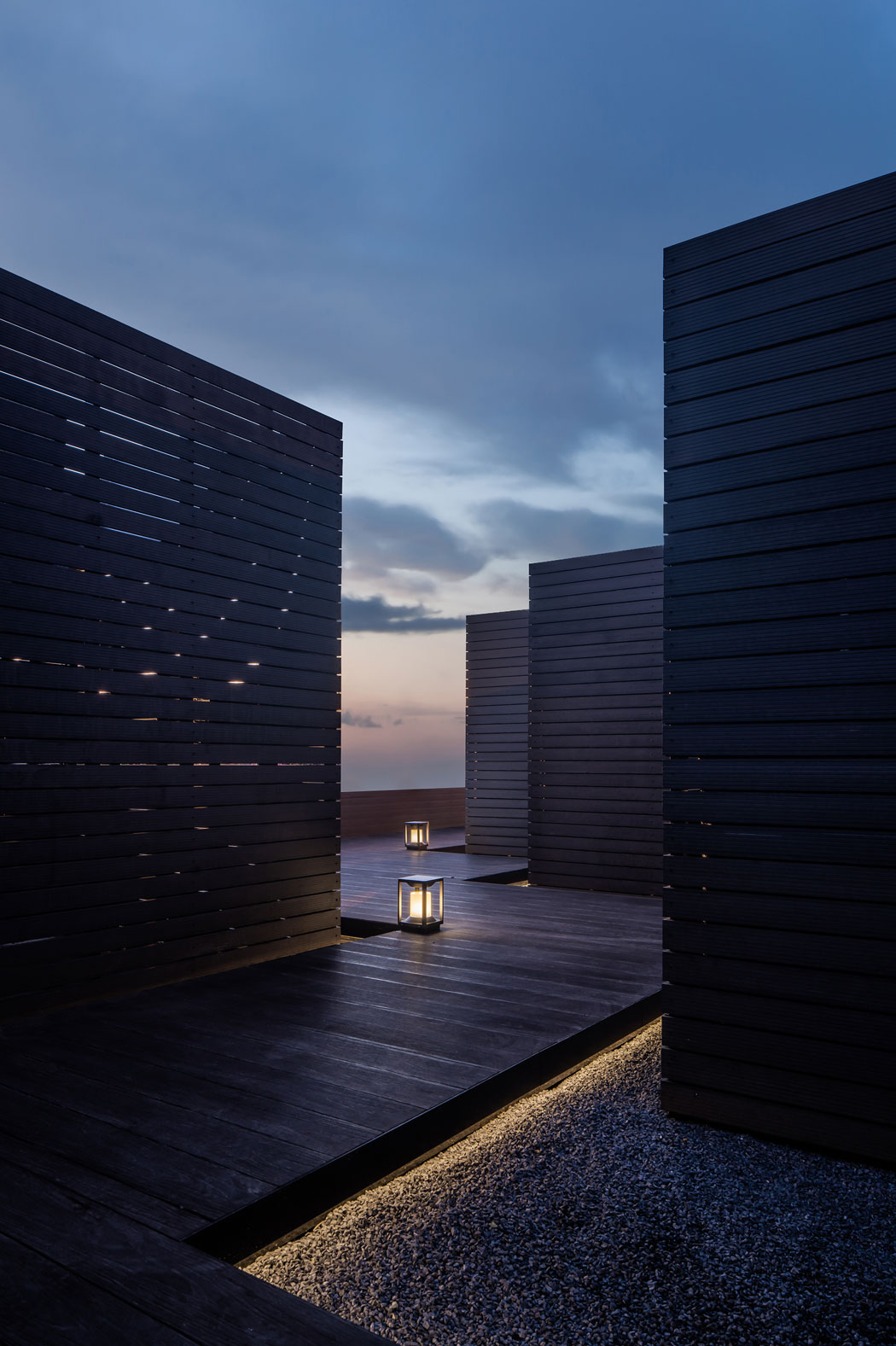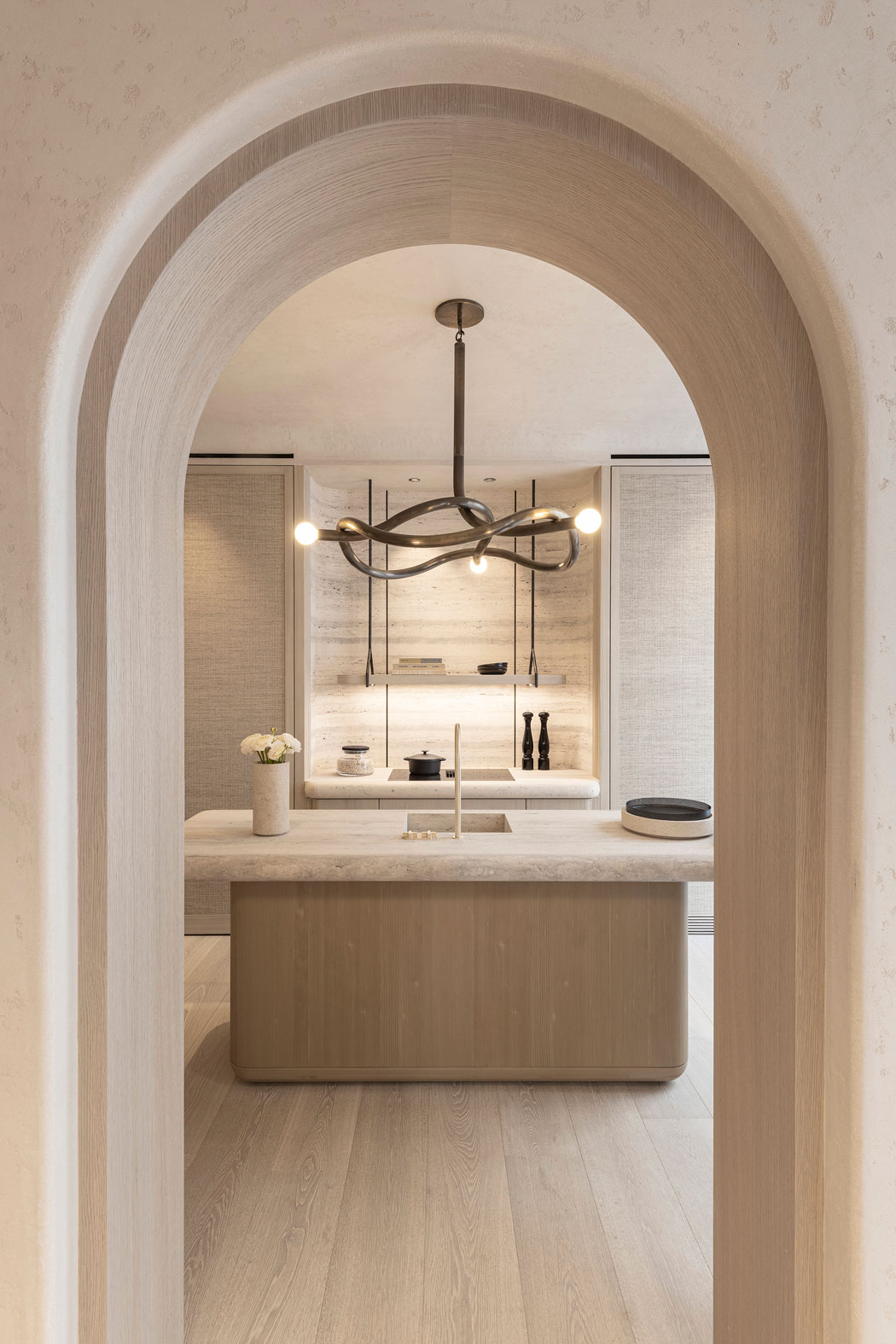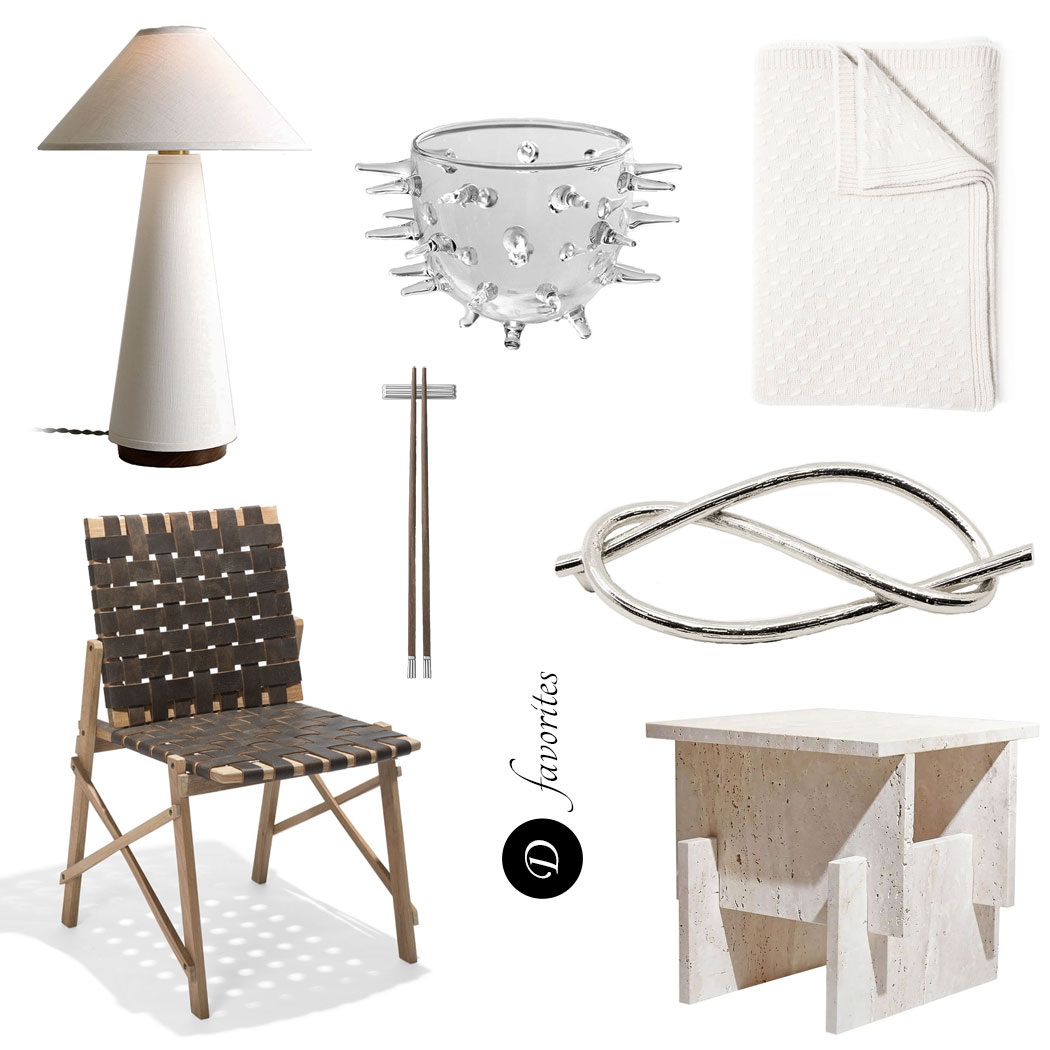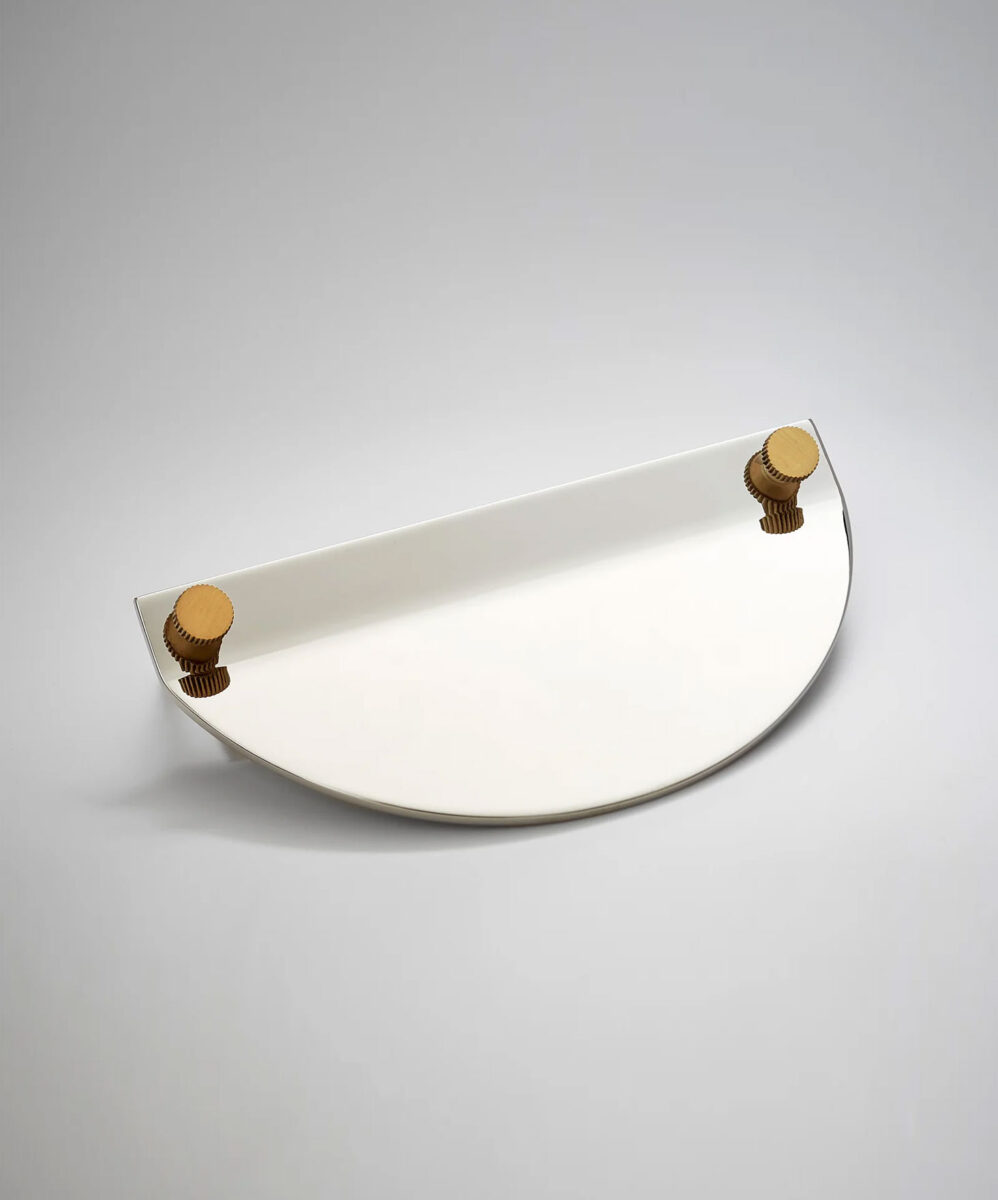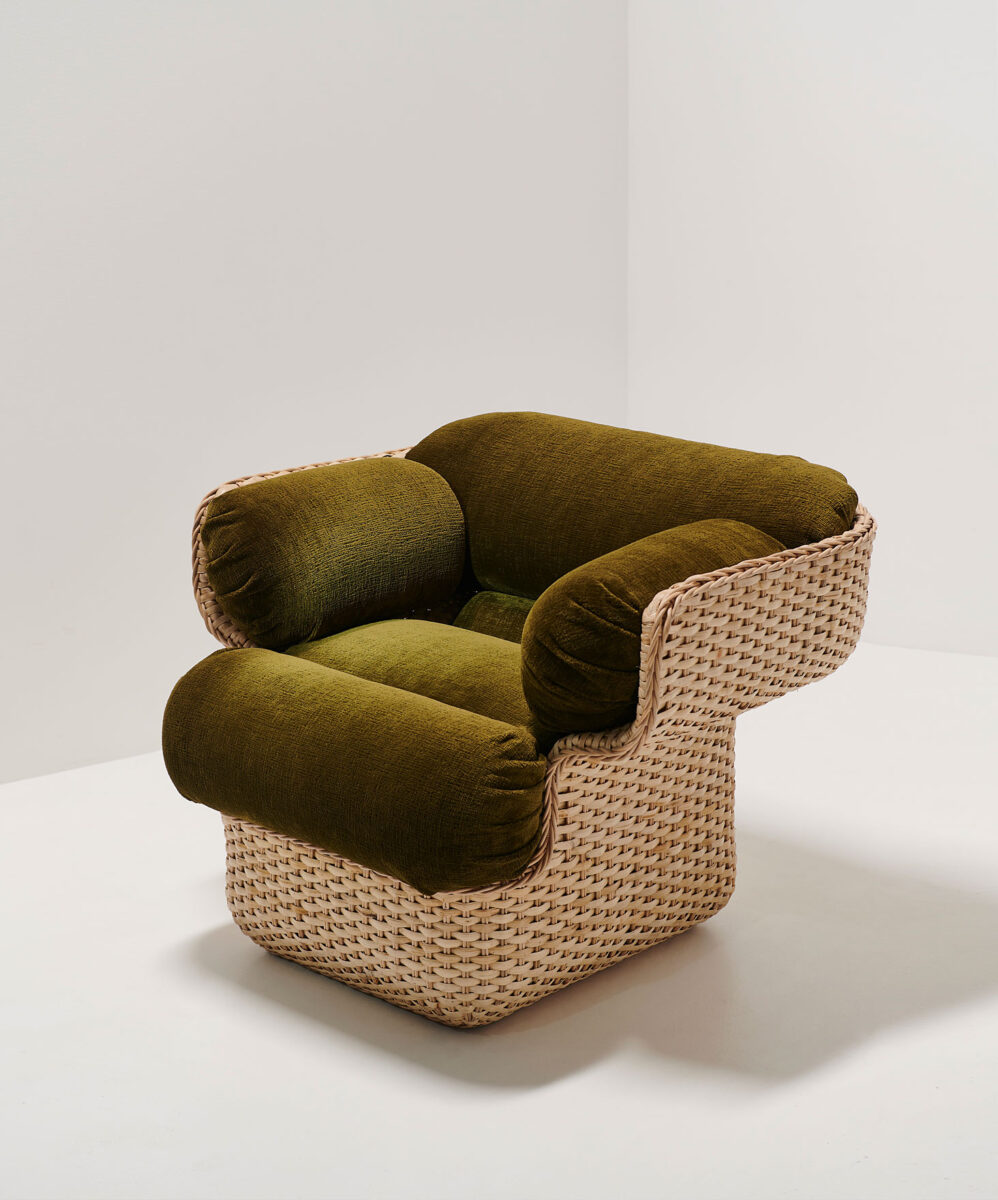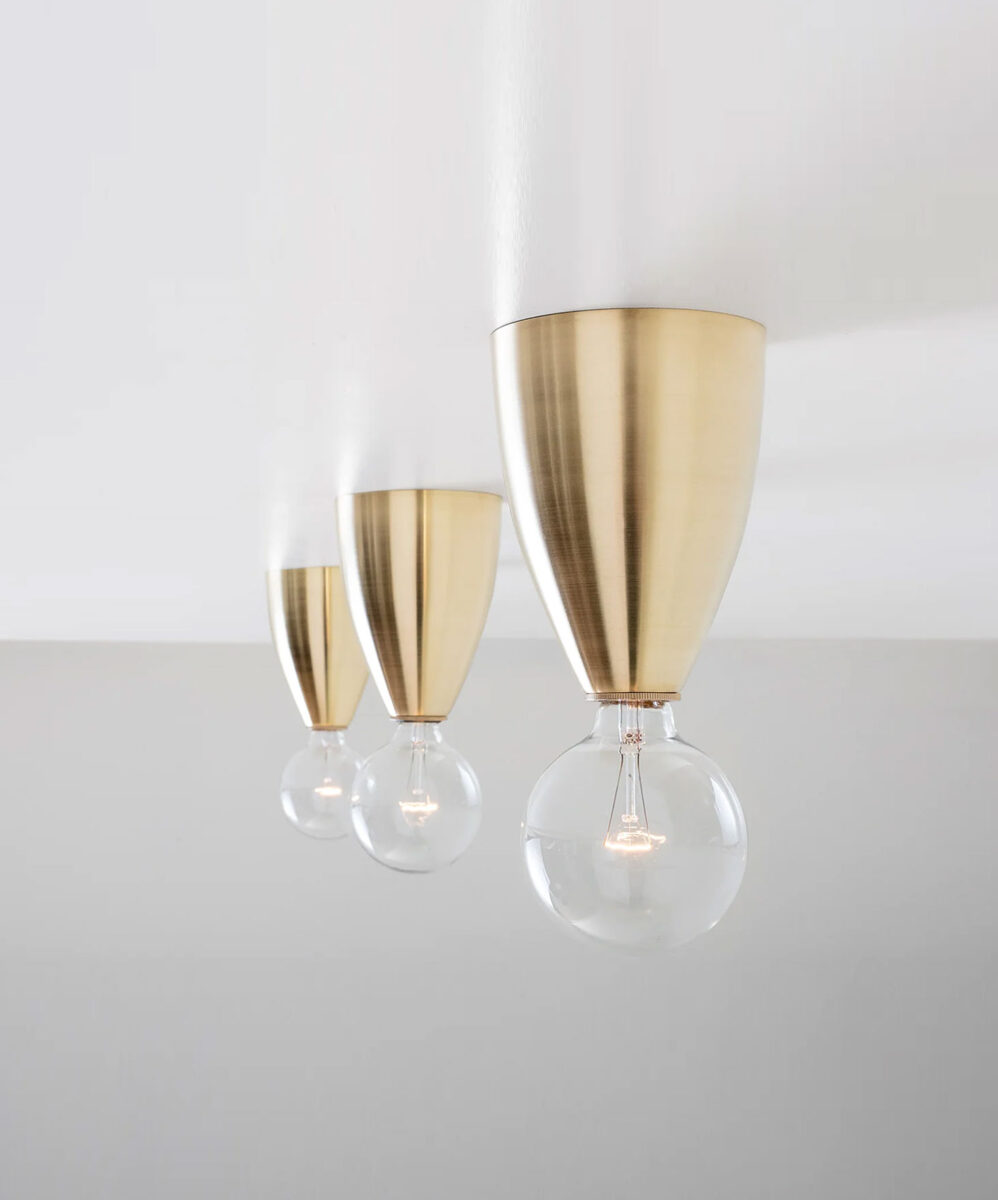
THE TERM…
‘strong design’ is invariably linked to an assertive idea rooted in something honest and secure. In the case of The Fleming Hotel, interior design draws specifically from Hong Kong’s maritime heritage and the building’s own structural past. Originally built in the 1970s and located next to the Victoria harbor front in Hong Kong’s historic and vibrant Wan Chai district, The Fleming needed a design vision that could draw on these surroundings and cultural contexts. The owners, Hong Kong natives and childhood friends, John Hui and Jason Cohen, engaged A Work of Substance, Hong Kong’s leading design studio helmed by creative director and branding specialist Maxime Dautresme, to create a new destination that would preserve the hotel’s sense of authenticity while simultaneously infusing interiors with forward-thinking verve.

A KEY…
component guiding the refurbishment of this 66-room boutique hotel, was the industrial style that flourished in Hong Kong during the 1960s and 1970s fused with elements that recall the city’s famous Star Ferry, Hong Kong’s oldest form of transport that holds a special place in the hearts of locals as well as tourists. As a starting point, the ferry’s signature color palette – combining beige with rich tones of red and emerald green – was applied to interiors, paying homage to this sailing icon and recalling the color scheme of many of the district’s local businesses, including street stalls, traditional food outlets and repair shops.

THE RECEPTION…
evokes a nautical theme thanks to its smoked oak, wooden-clad interior inspired by decking, while red suede key holders are reminiscent of Chinese mailboxes. In the lobby, custom-made dark banquettes and striped soft furnishings capture the spirit and glamour of a cruise ship interior.
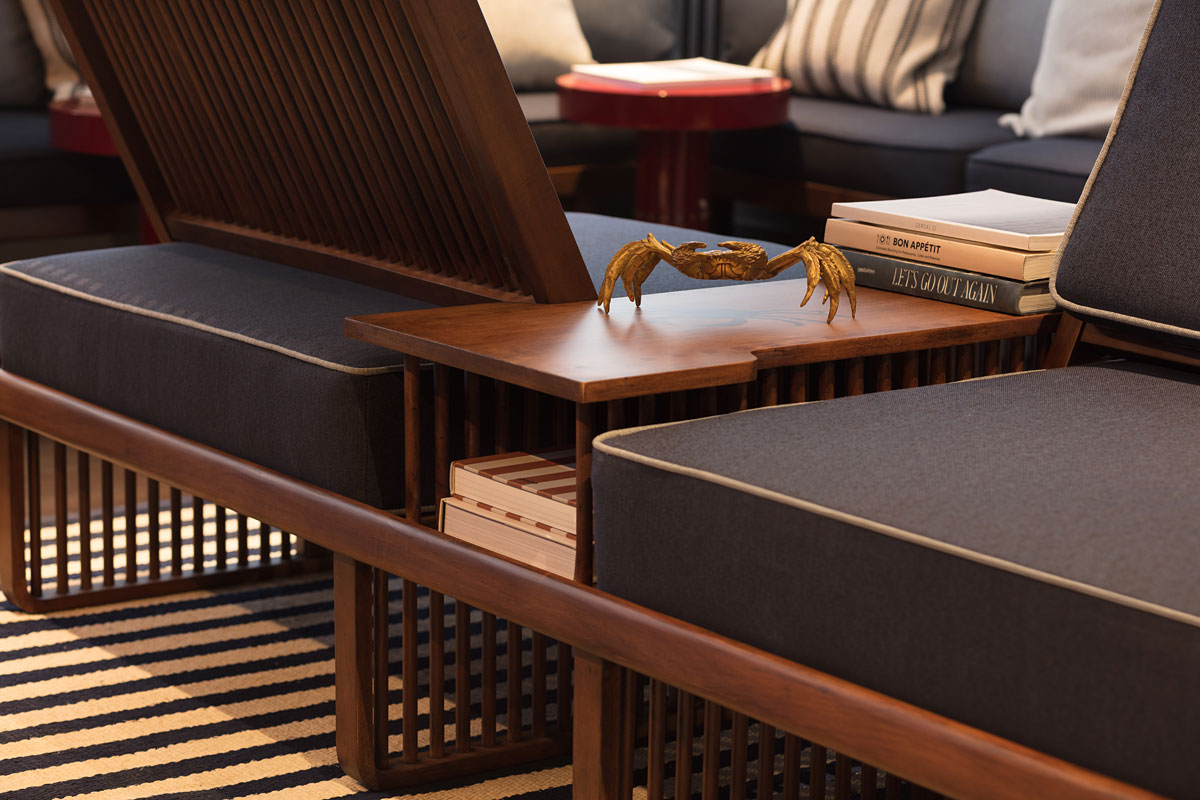
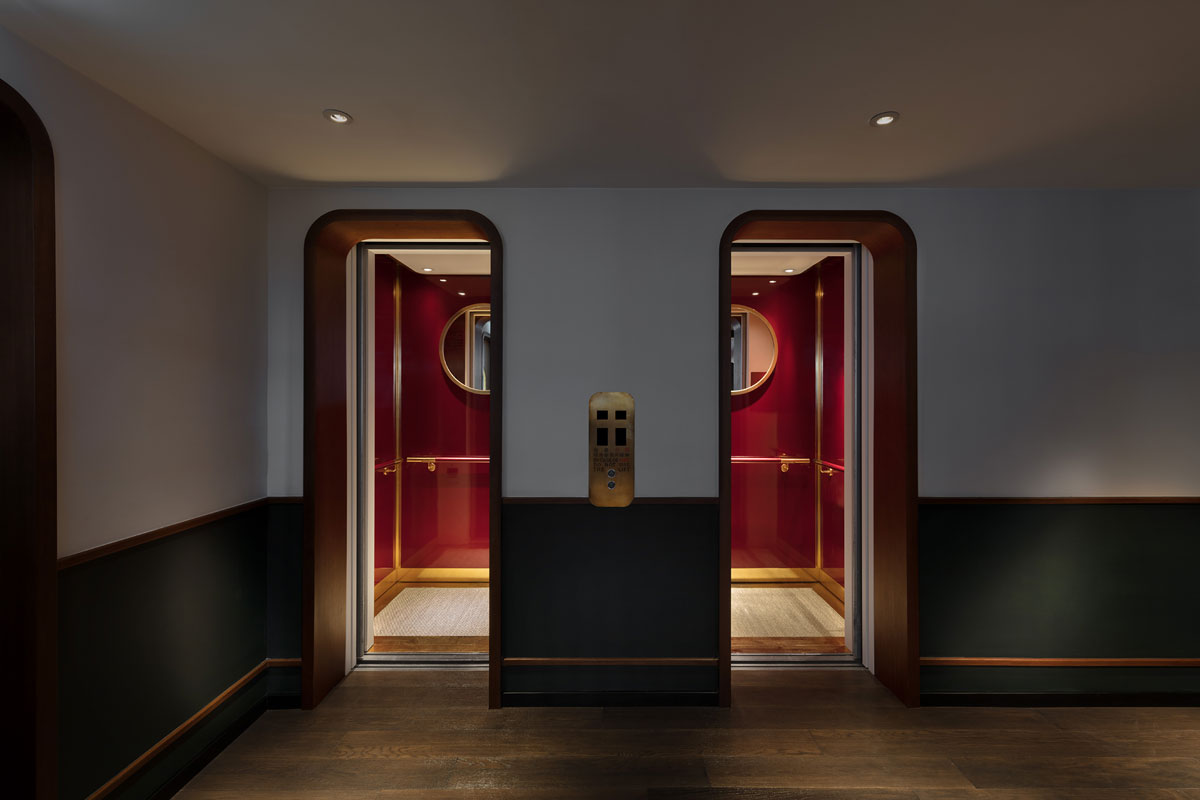

A COHESIVE…
visual journey allows guests to fully immerse themselves in the practice’s contemporary concept of nostalgia. For example, the hotel elevators are designed to look like luxe storage compartments with red lacquered walls and brushed brass detailing. Similarly, rooms have a luxury cabin feel, ensuring comfort, originality, and convenience. Stylish industrial elements are well integrated into this aesthetic thanks to a varied collection of bespoke brass fixtures, including perforated brass lights, machine-like dials and ‘control panel’ switches, many inspired by navigation tools, compounding the hotel’s part functionalist/part nautical theme.
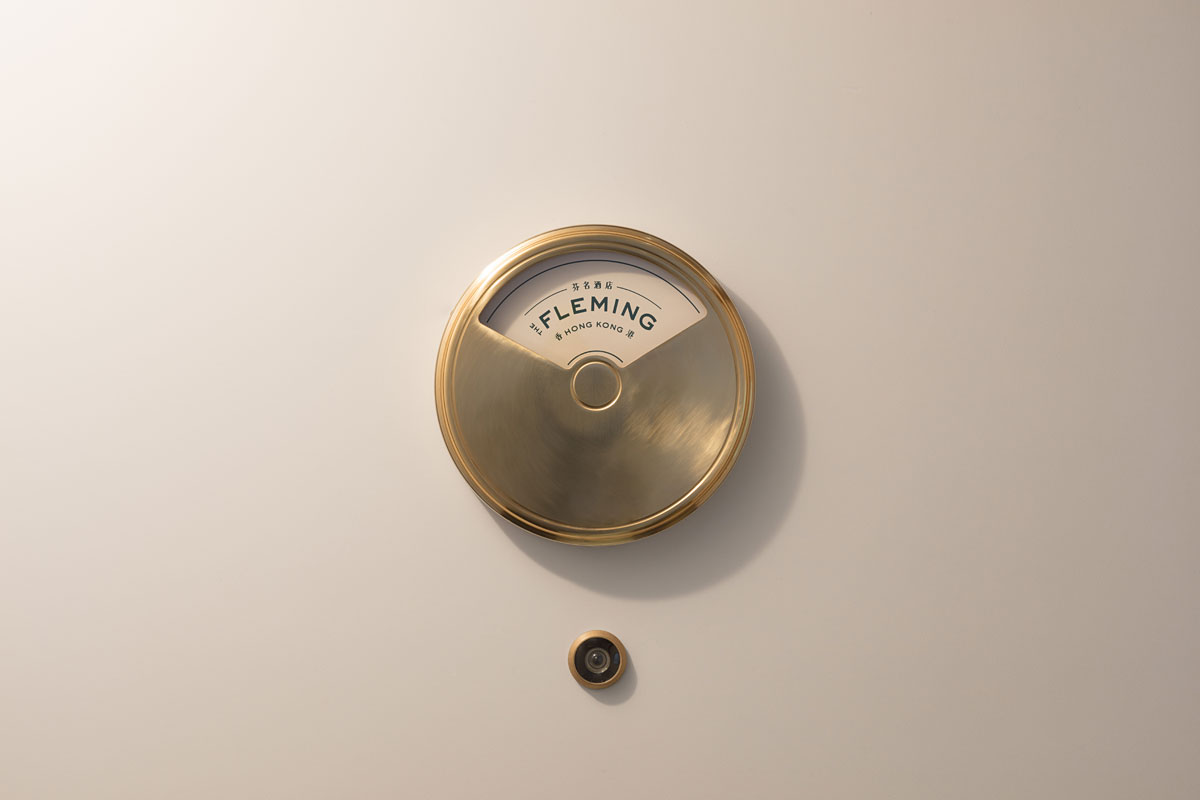
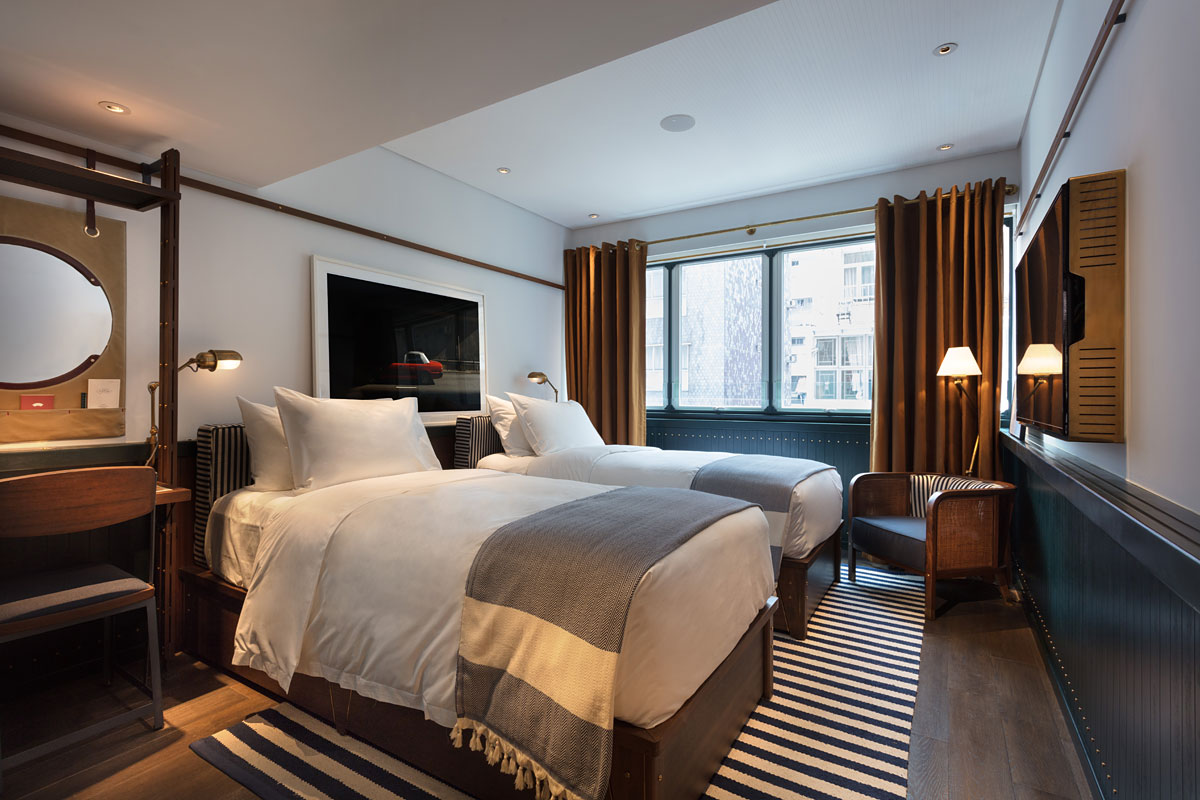
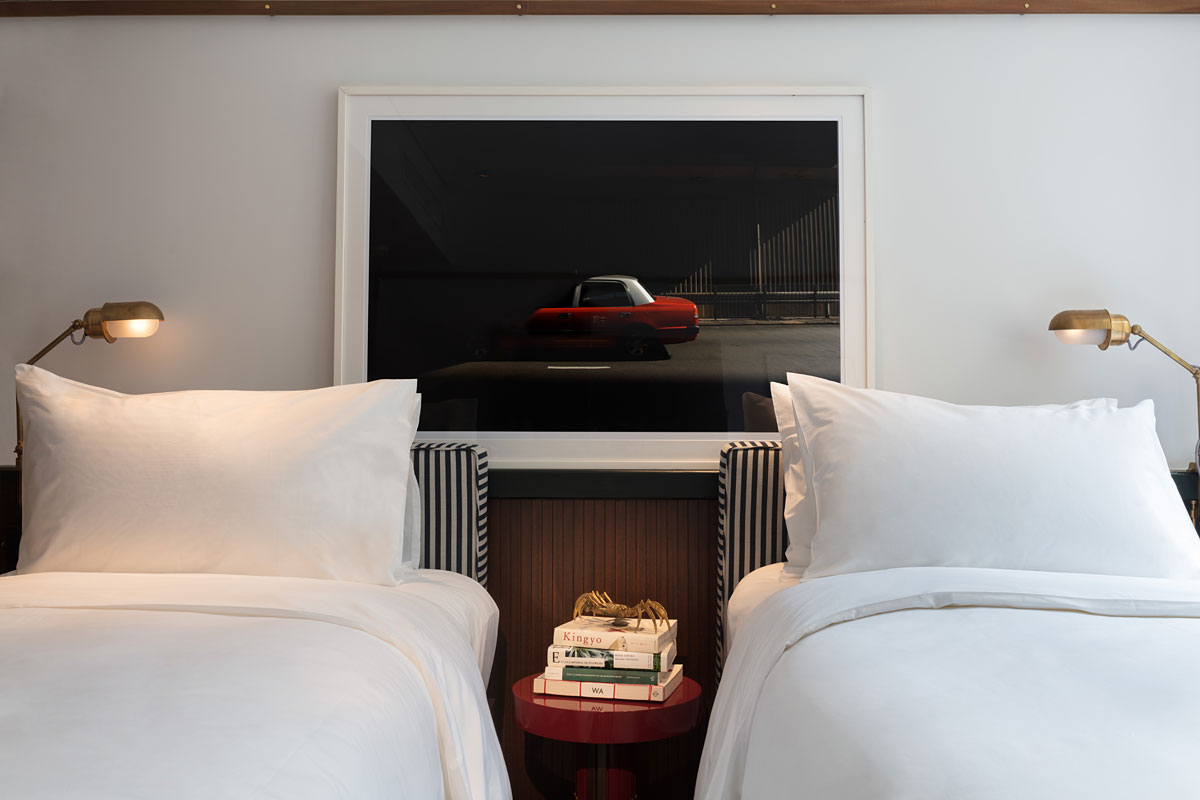
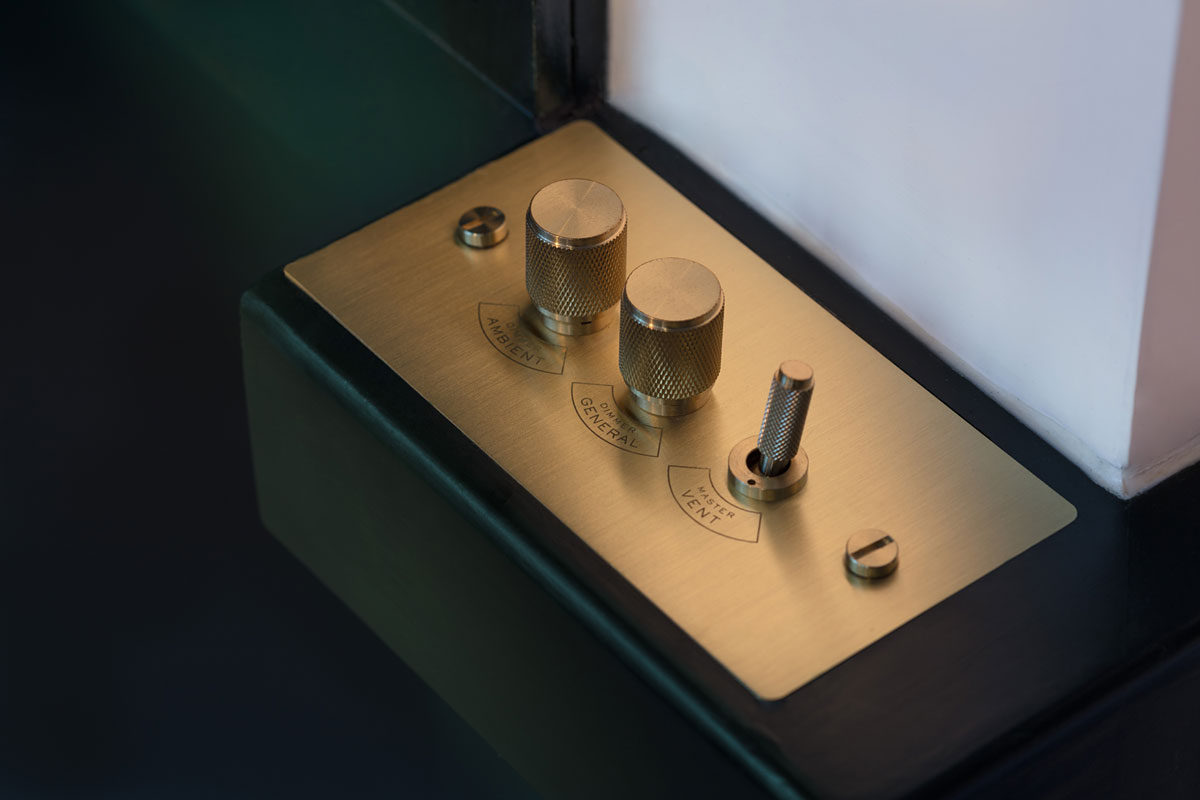
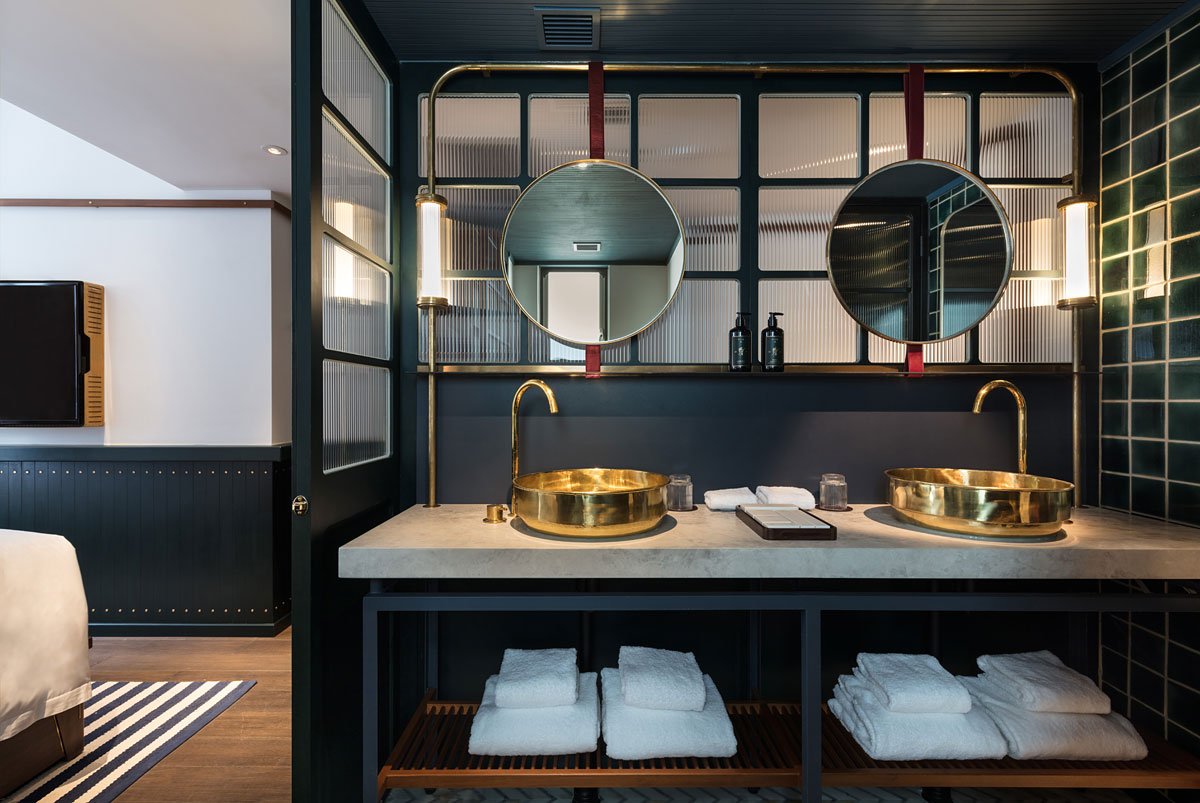
HIGH…
quality Sealy mattresses are dressed in luxury bed linen and are matched by sleek modern furniture pieces, along with a few idiosyncratic touches in the form of porthole-style mirrors, bottle green bathroom tiles and more carmine red lacquer, also a symbol of good fortune in Chinese culture.
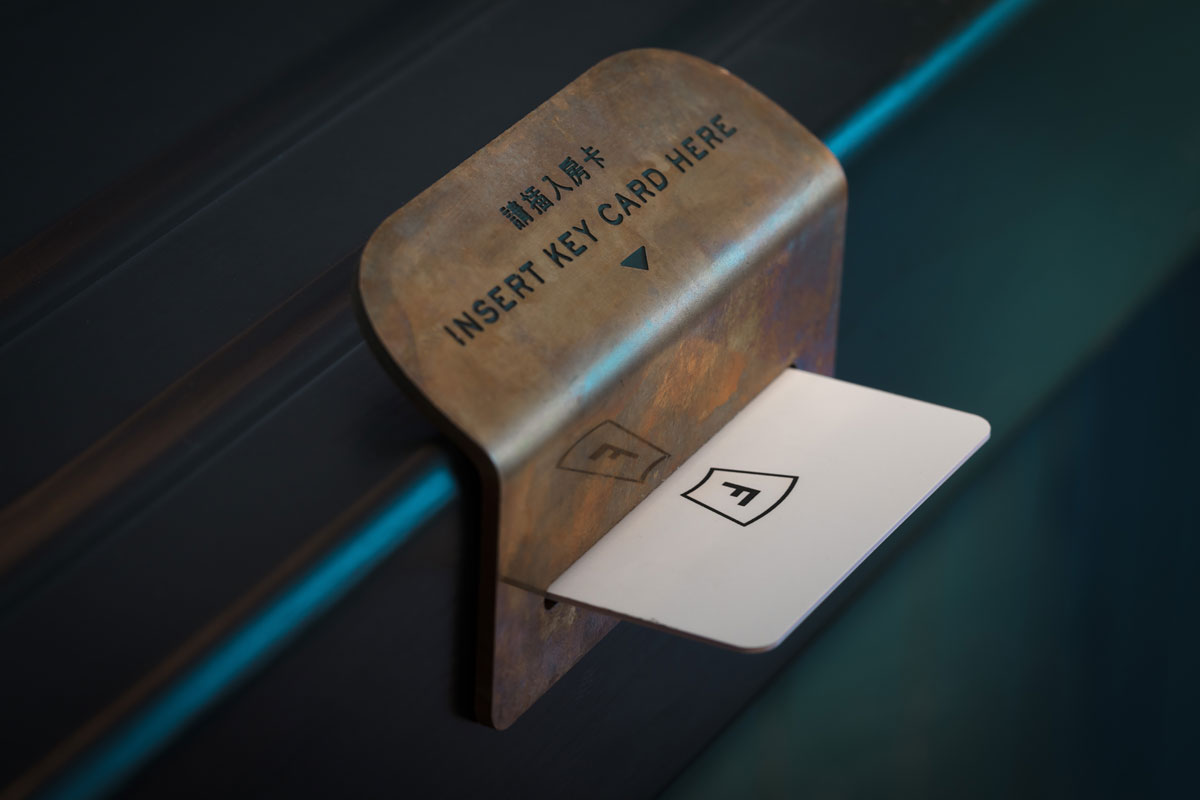
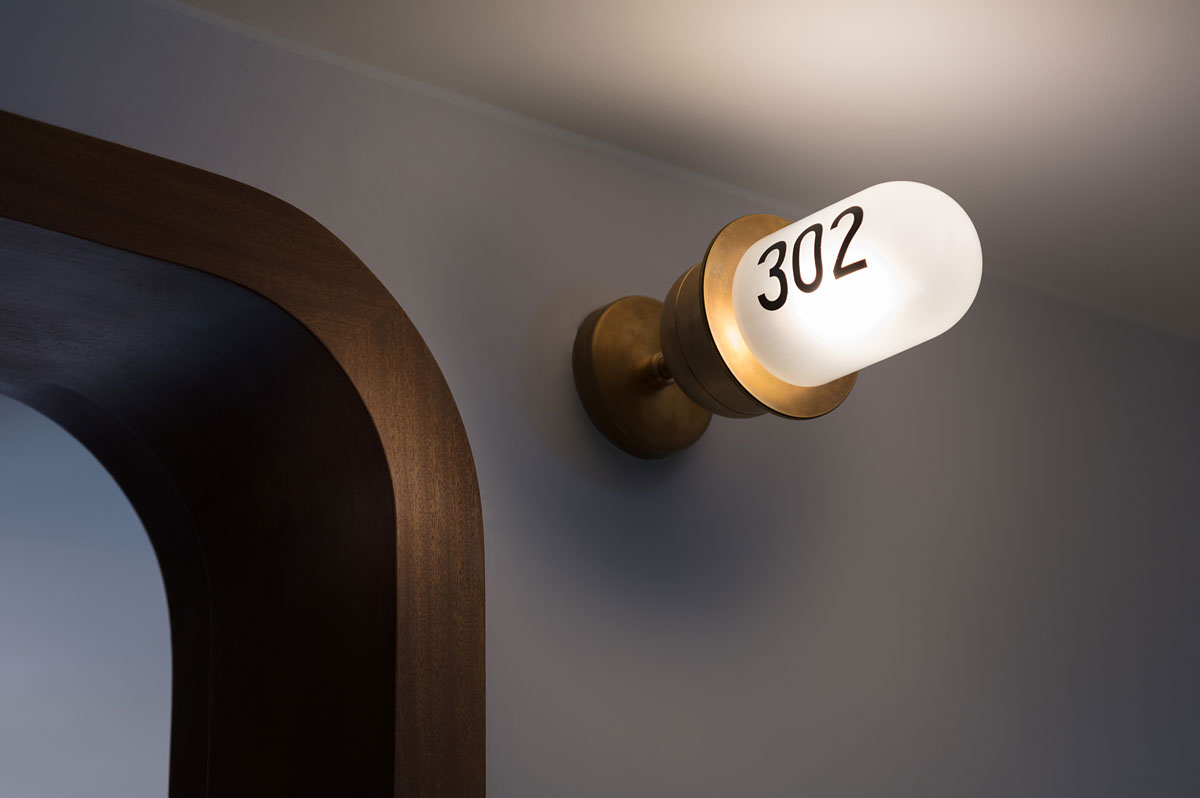
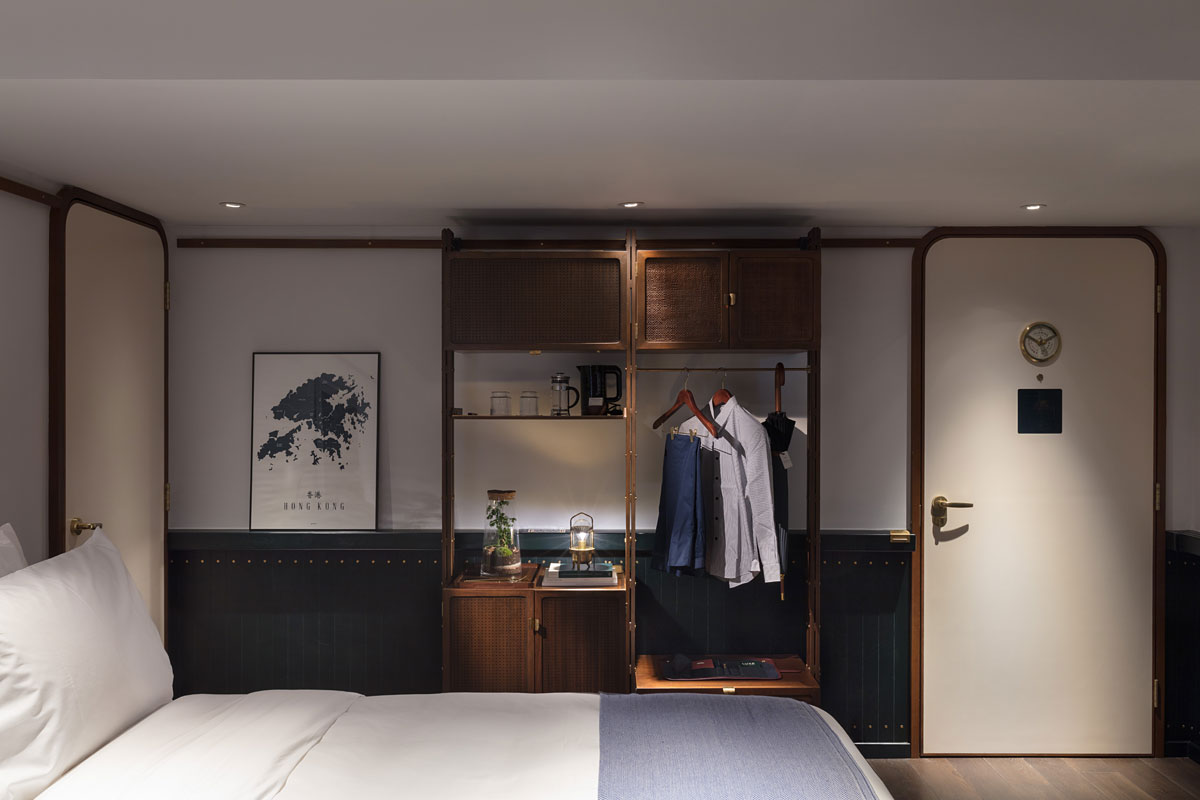
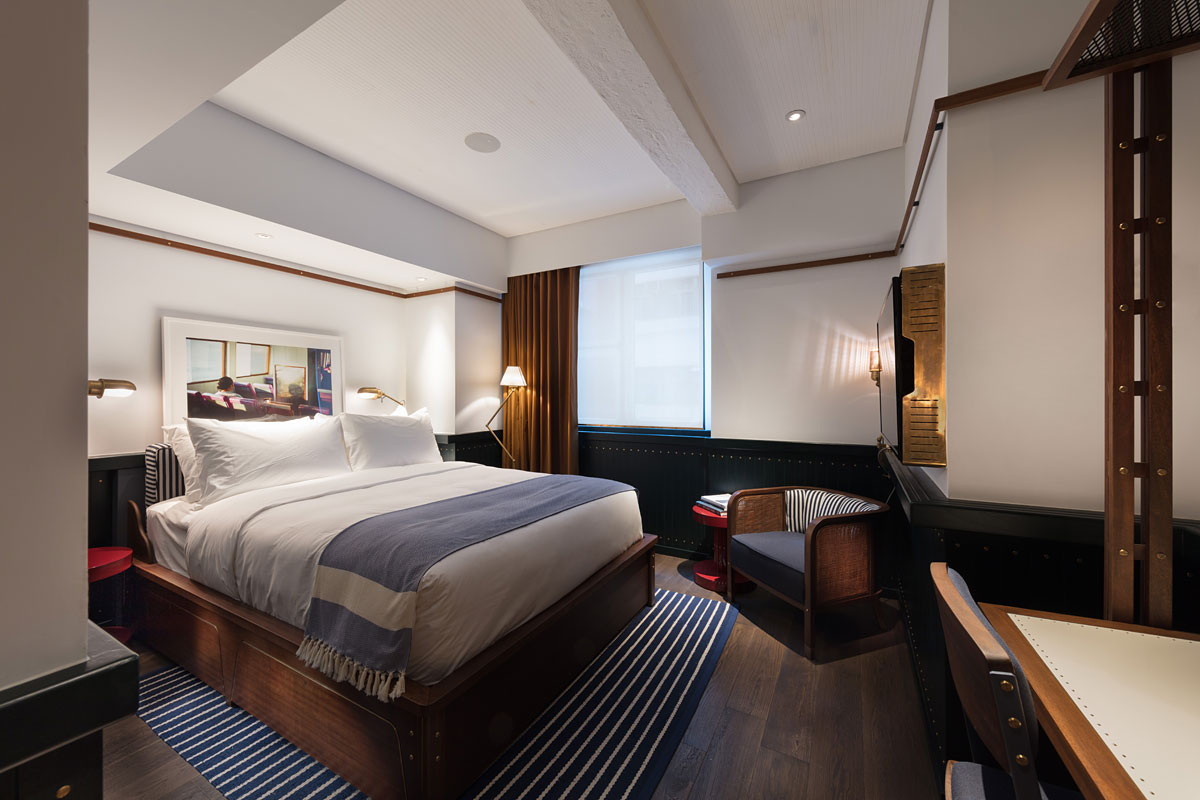


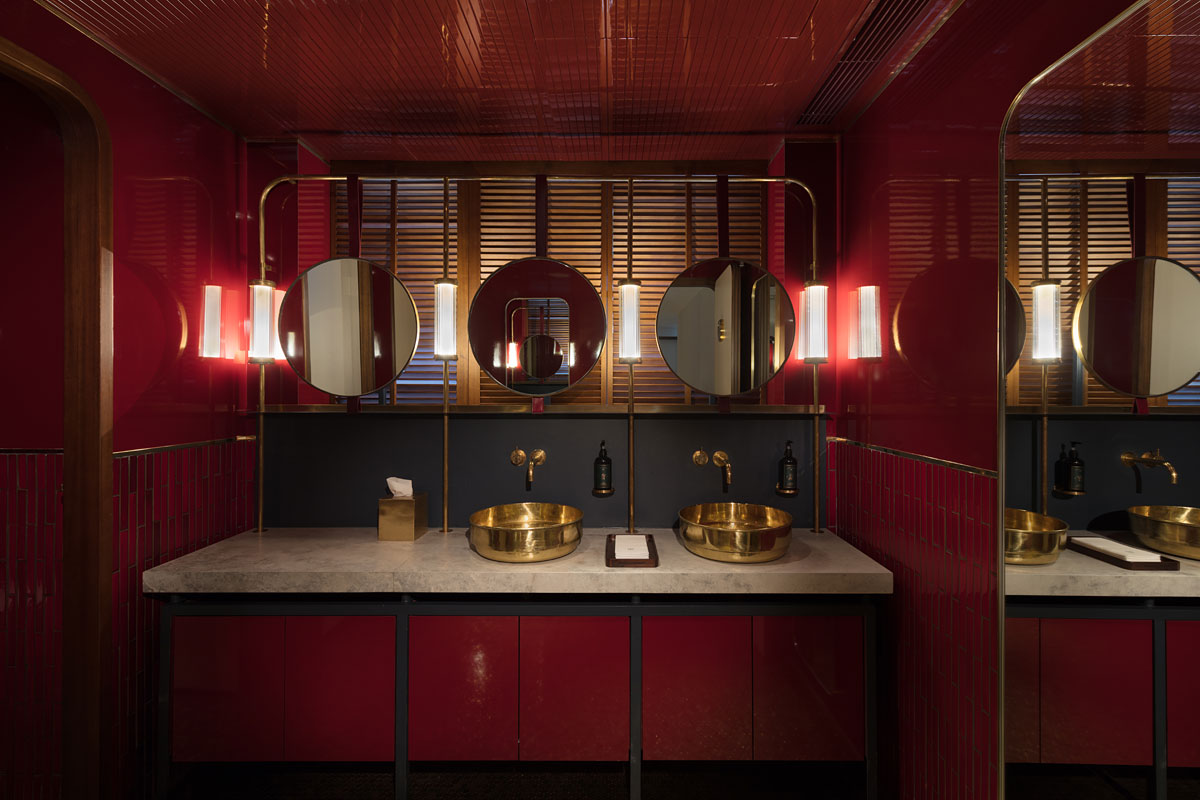

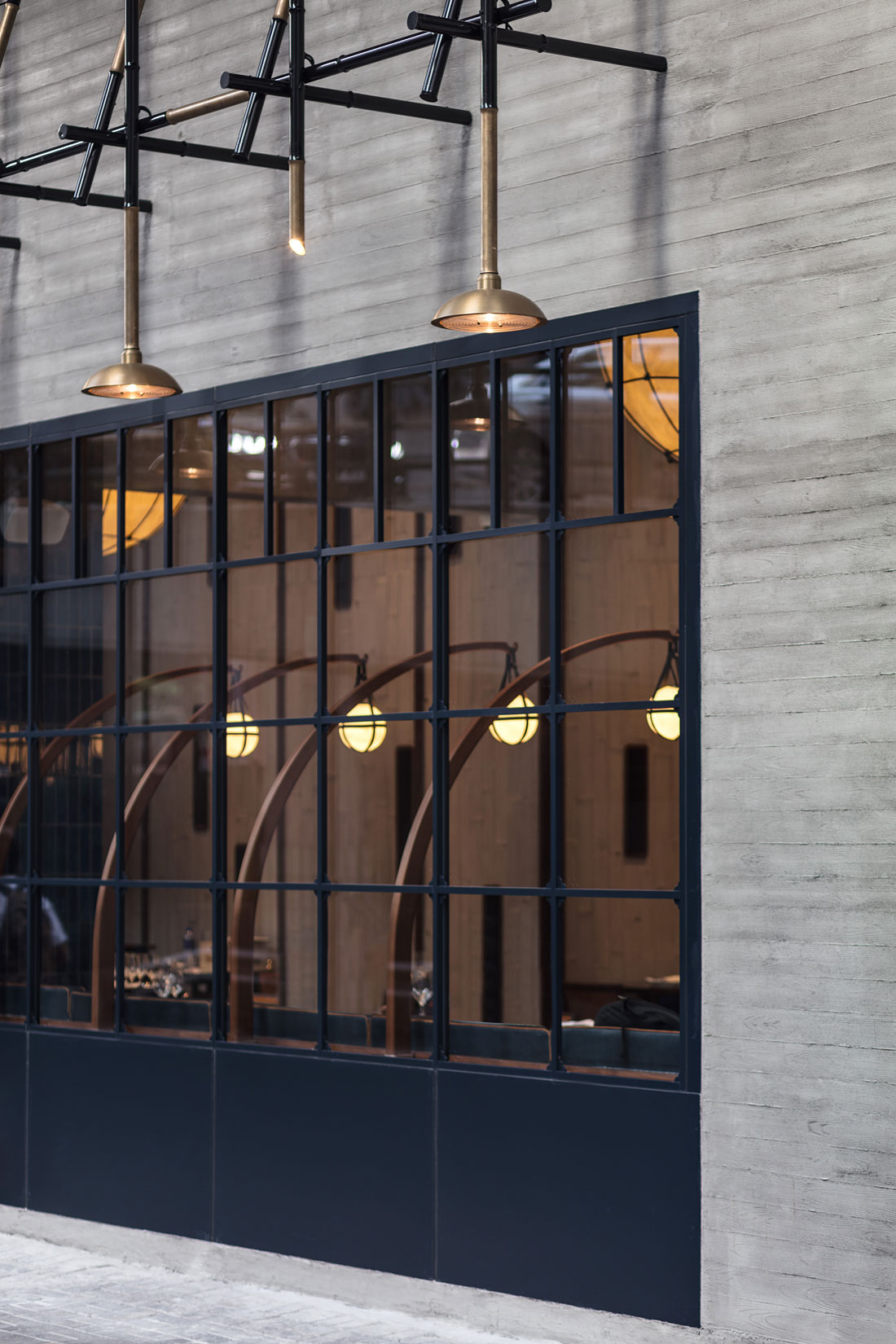
THE STRIKING…
‘criss-cross’ light canopy on the hotel’s façade combines cast iron with brass cleaves, and is inspired by bamboo scaffolding construction unique to Hong Kong.
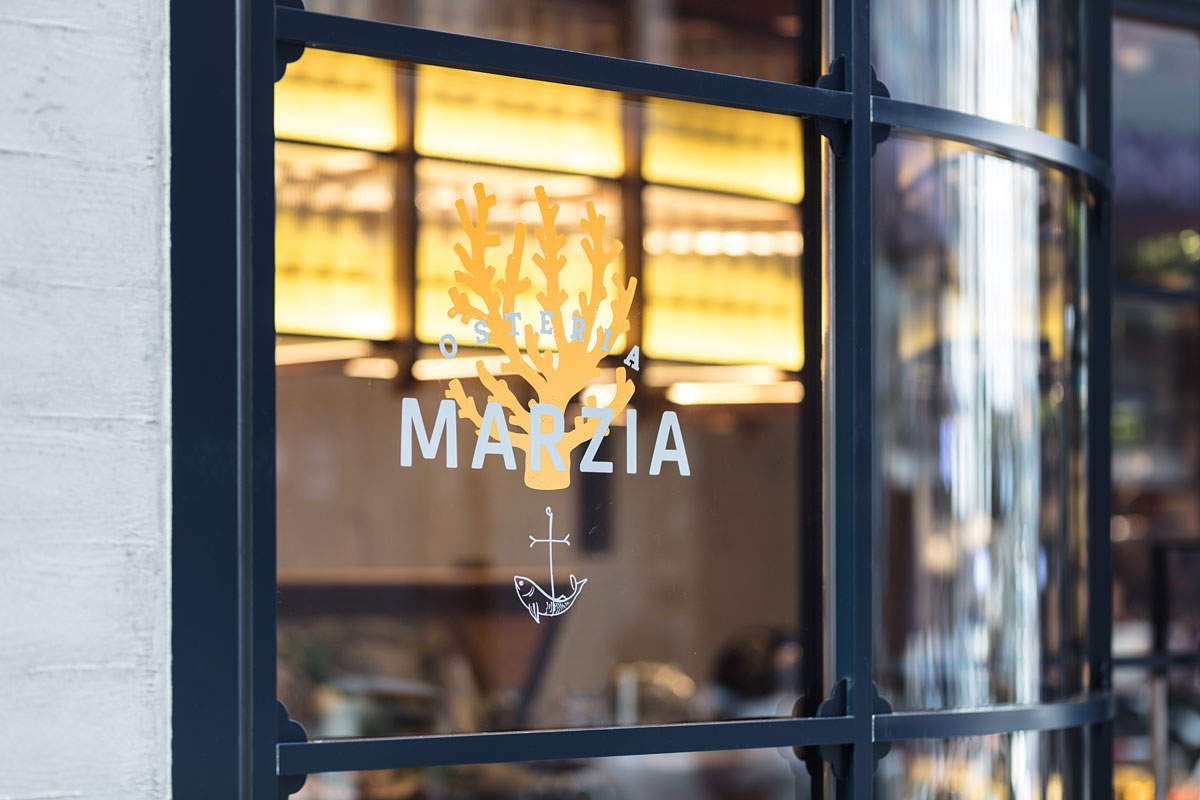
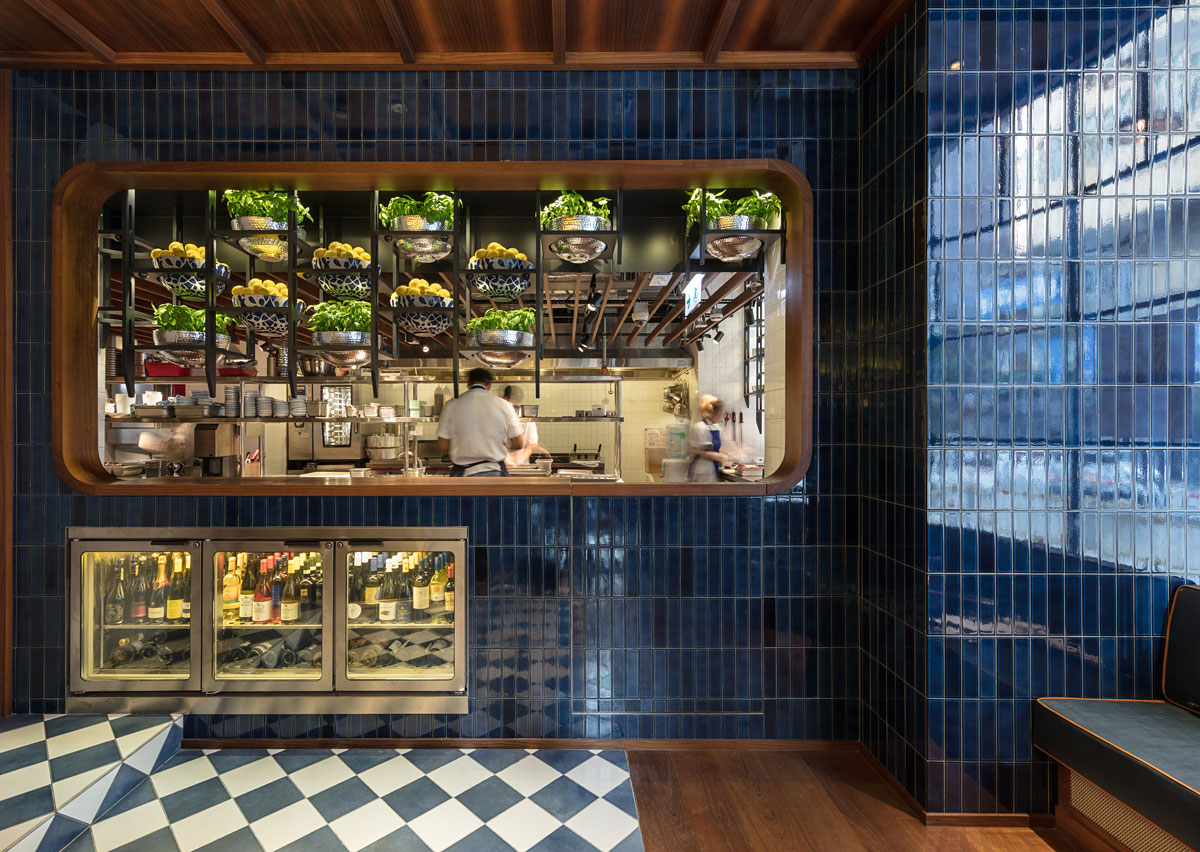
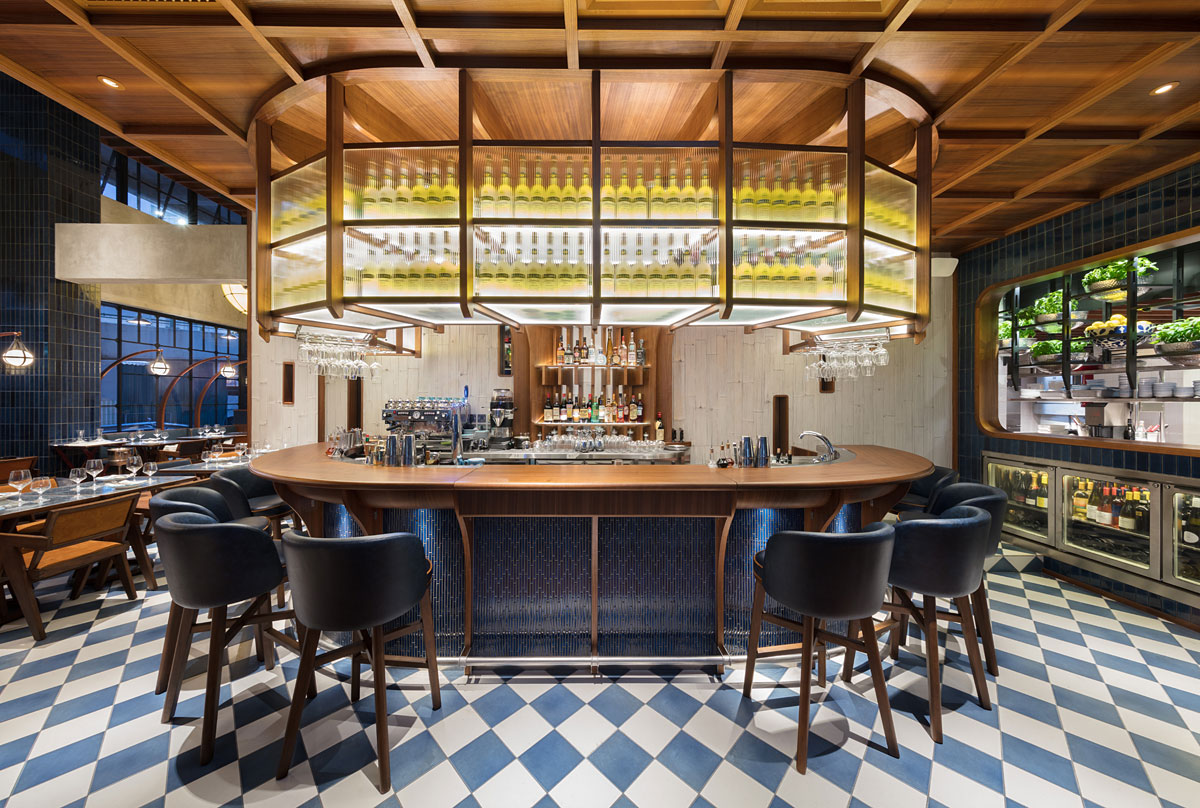
DEEPENING…
the maritime theme is the hotel’s street level restaurant Osteria Marzia specializing in Italian coastal cuisine. The double-height space is dominated by a series of iron-caged globe lanterns, each one supported by a giant curving wooden arm, recalling the arching silhouette of a ship’s hull. The eye-catching osteria makes its biggest design statement with its open kitchen; contoured by deep blue tiles and finessed with a softly rounded teak trim – framing the energy and bustle of the kitchen. The overall effect is not unlike being on a luxury ocean liner in the heart of Hong Kong.
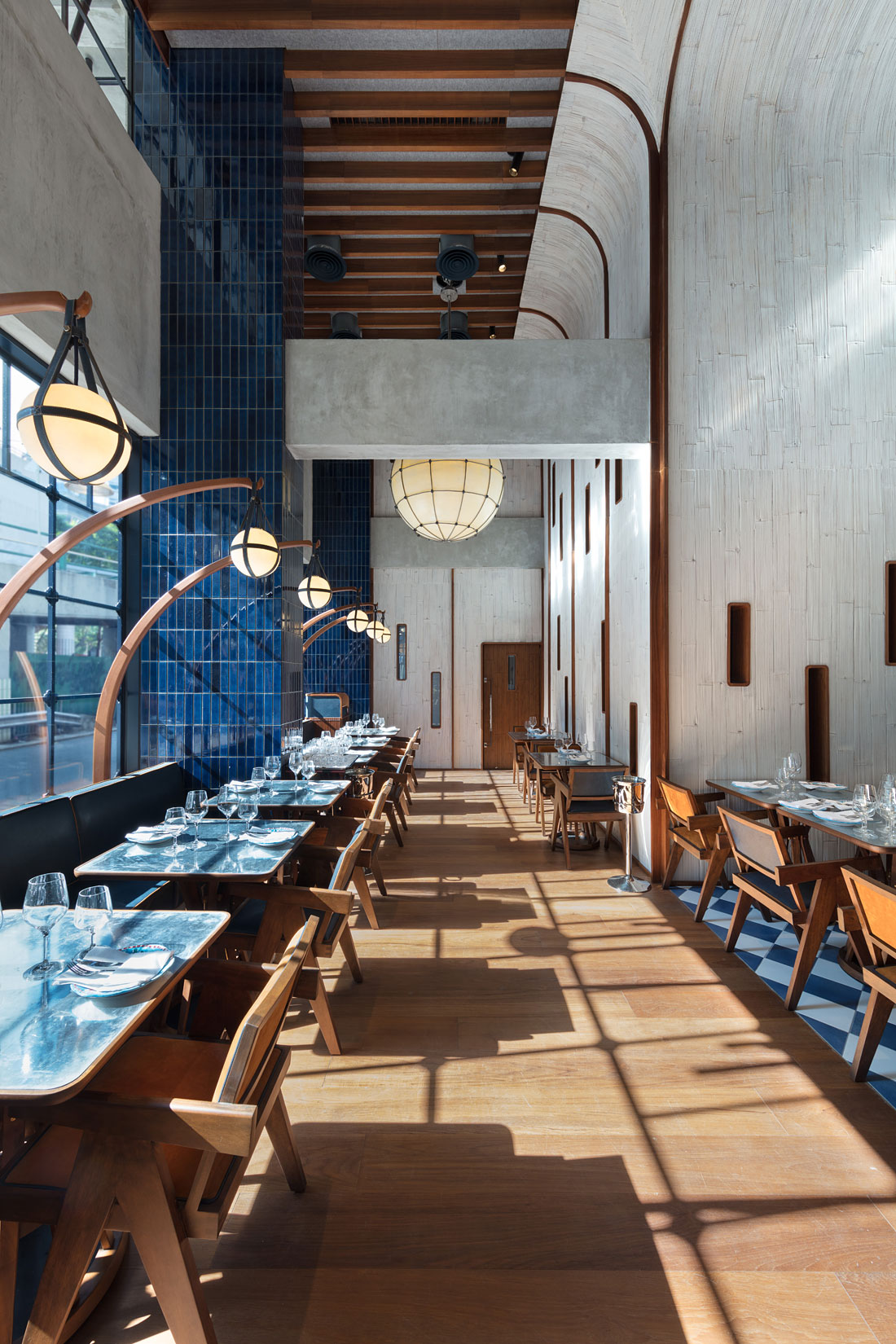
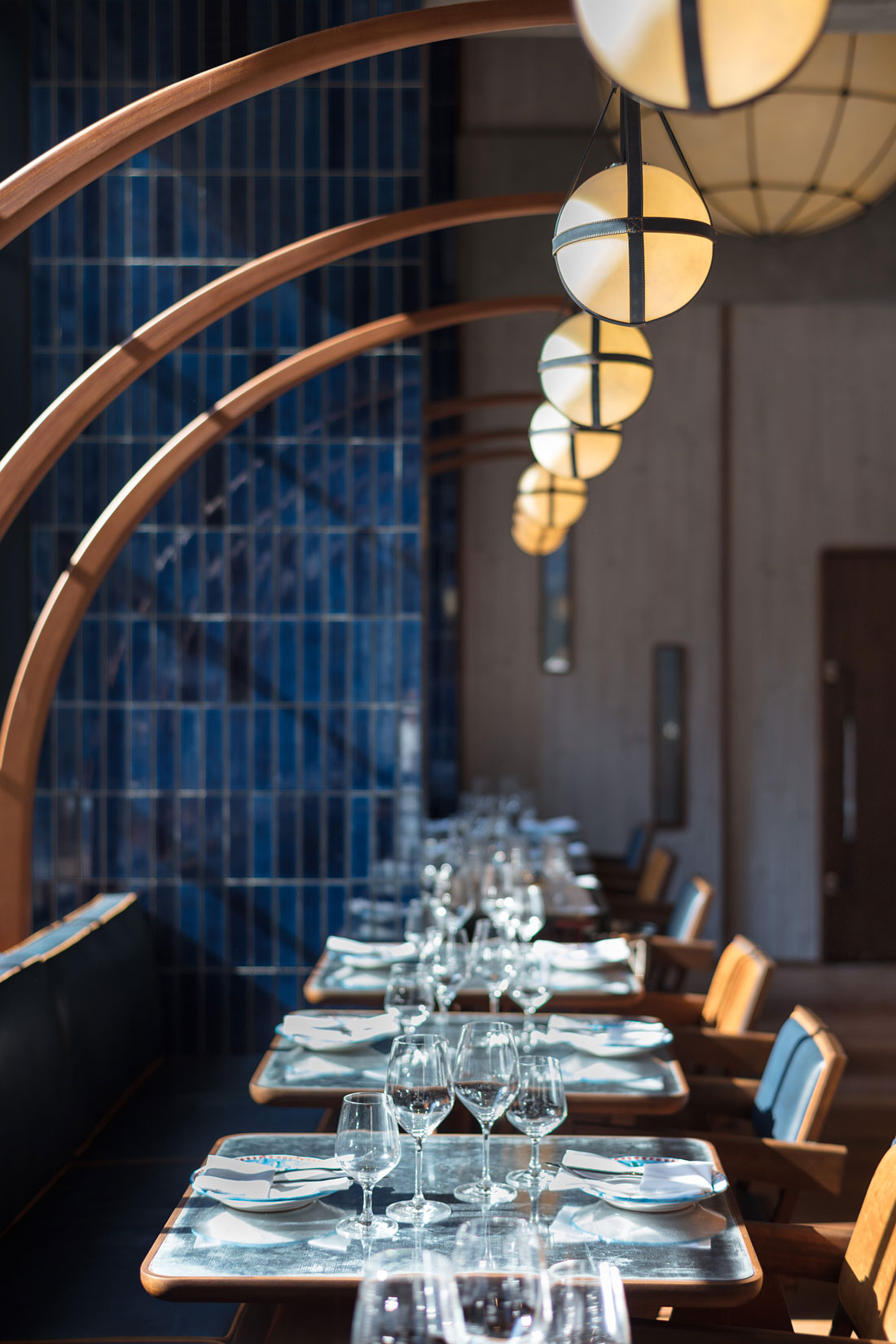
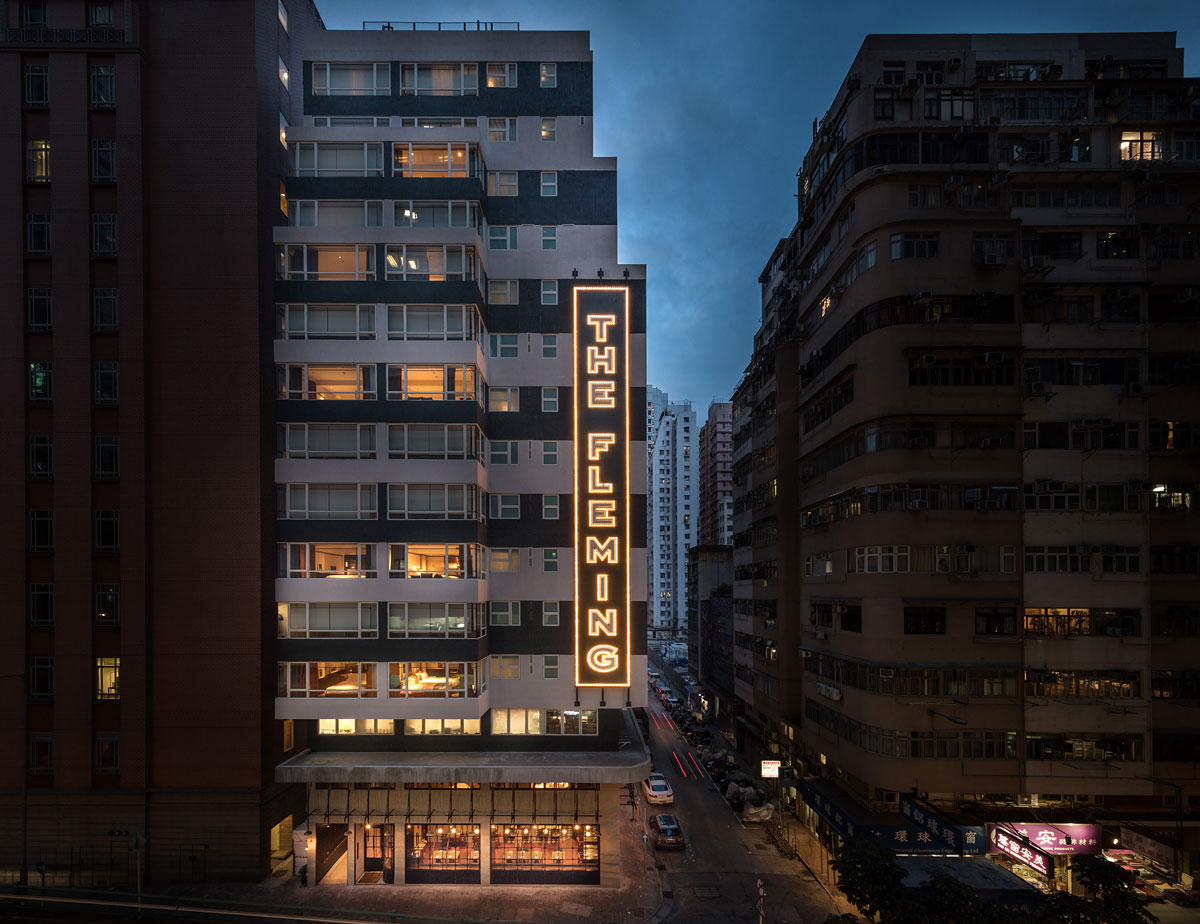
Design: A Work Of Substance
Photography: Dennis Lo & Judy Chen




